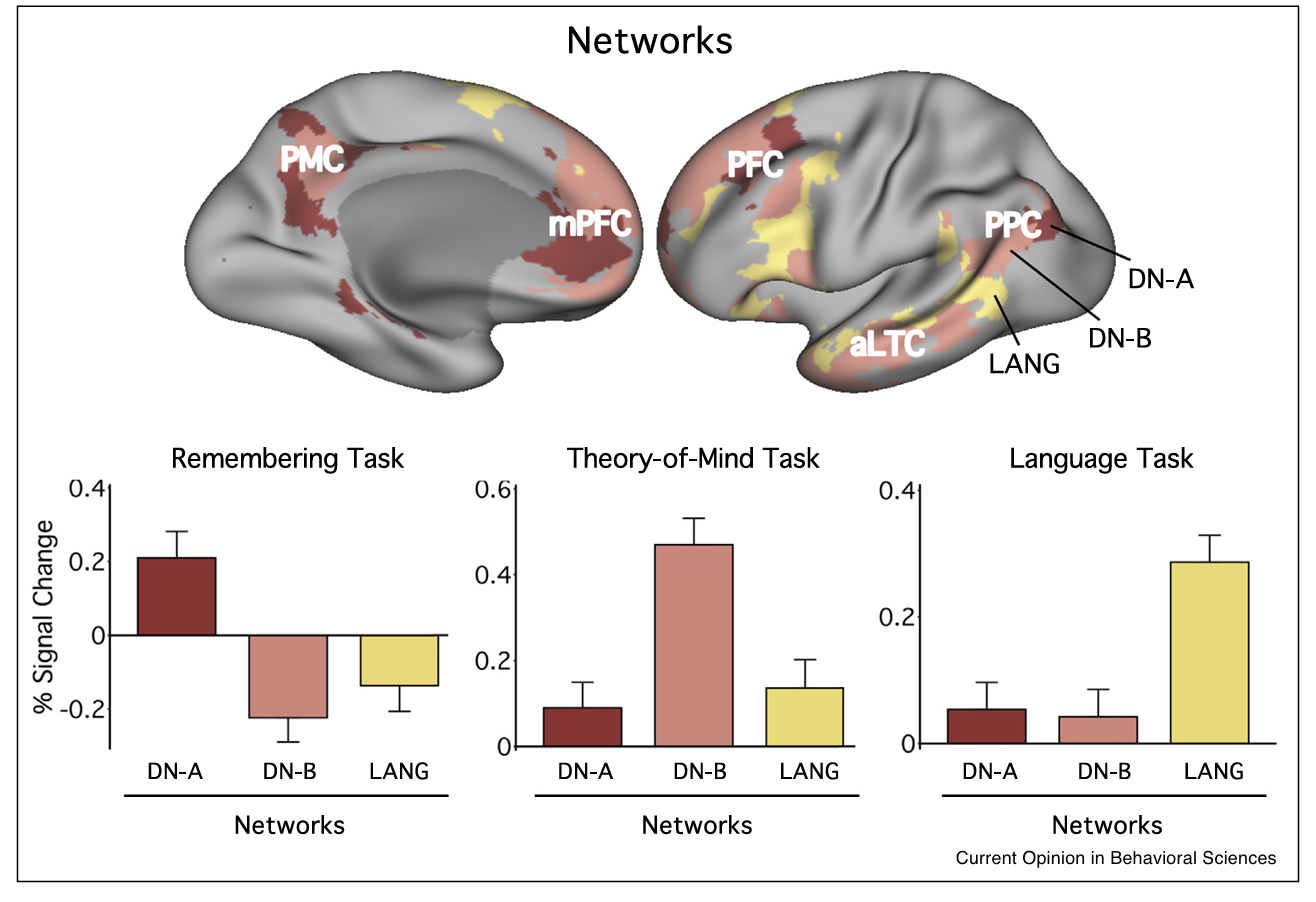Overview
With minimal effort, you can recall past experiences, consider friends’ feelings, imagine new scenarios, and communicate. Understanding how we engage in these advanced forms of thought can provide insight into why human minds are flexible but also vulnerable to psychopathology.
Our lab uses within-individual (‘precision’) approaches to study association networks, including how they are organized, what broad domains and specific processes they support, and how they might change across adolescent development or other periods of life featuring major hormonal shifts.
We use neuroimaging (MRI) and lots of other tools to learn about networks, cognitive processes & factors that might impact network function and change. Some of those other tools include ecological momentary assessment (EMA), behavioral tasks, questionnaires and hormonne samples to characterize fluctuations in individual experiences over time.
More Information
Association cortex (zones furthest from primary sensory and motor areas) is fascinating because it shows disproportionate evolutionary expansion and prolonged postnatal development, with regions linked to multiple of the complex cognitive abilities that seem particularly advanced in humans.
Within association zones, regions form interconnected networks that are distributed (i.e., spread across the brain) and parallel (i.e., with regions of different networks side-by-side). More details of these networks can be appreciated when studying individuals, and our recent work has shown that multiple of these networks can be functionally dissociated.
For example, three interwoven networks - often blurred in group-averaged data - can be reliably identified in individuals, and each differentially responds to tasks targeting remembering, social reasoning, or language-relevant functions. Two additional networks appear to have more domain-flexible roles in cognitive control.

The image above shows an example of three domain-specialized association networks, defined within a single individual. The networks differentially respond to tasks tareting memory, theory of mind and language (Fig. 2 in DiNicola & Buckner 2021). Think about that further - within the zones showing the greatest evolutionary expansion in humans AND prolonged postnatal development, there are distinct networks - with regions side-by-side across the cortex - each supporting a functional domain that appears particularly advanced in the human niche!
What exact processes do these & nearby association networks support? How does this type of parallel organization arise? How do might these networks interact in service of complex functions? And how might network organization and/or function change across development & in the face of major life events? These are just some of the open questions we aim to tackle!